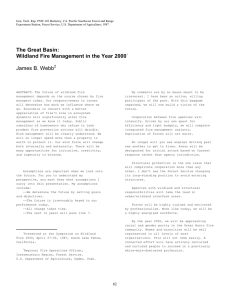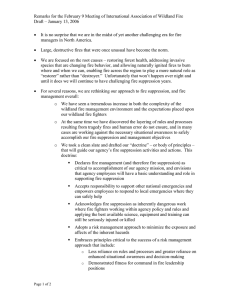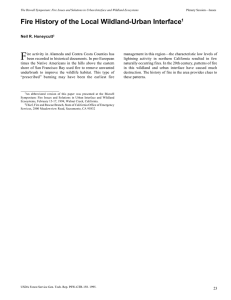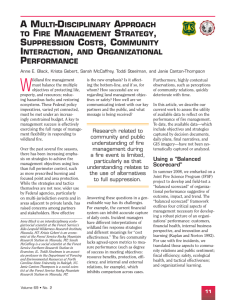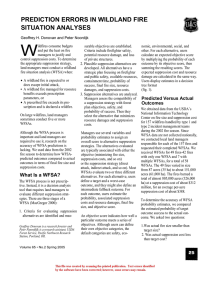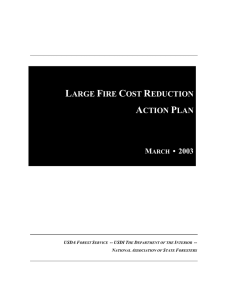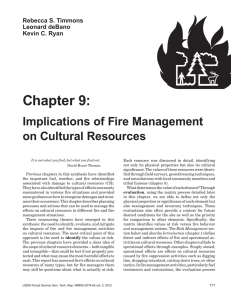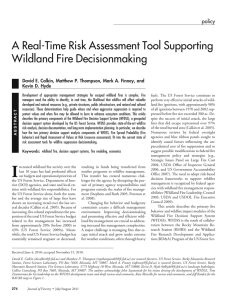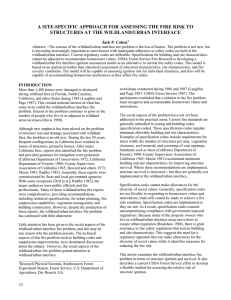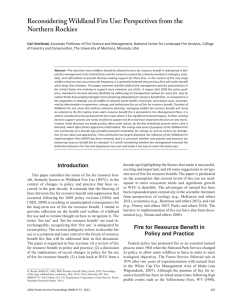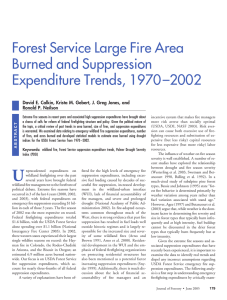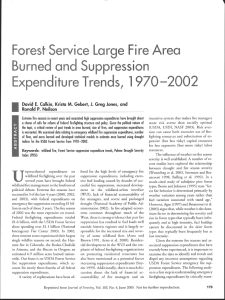USDA Forest Service Fire and Aviation Management
advertisement
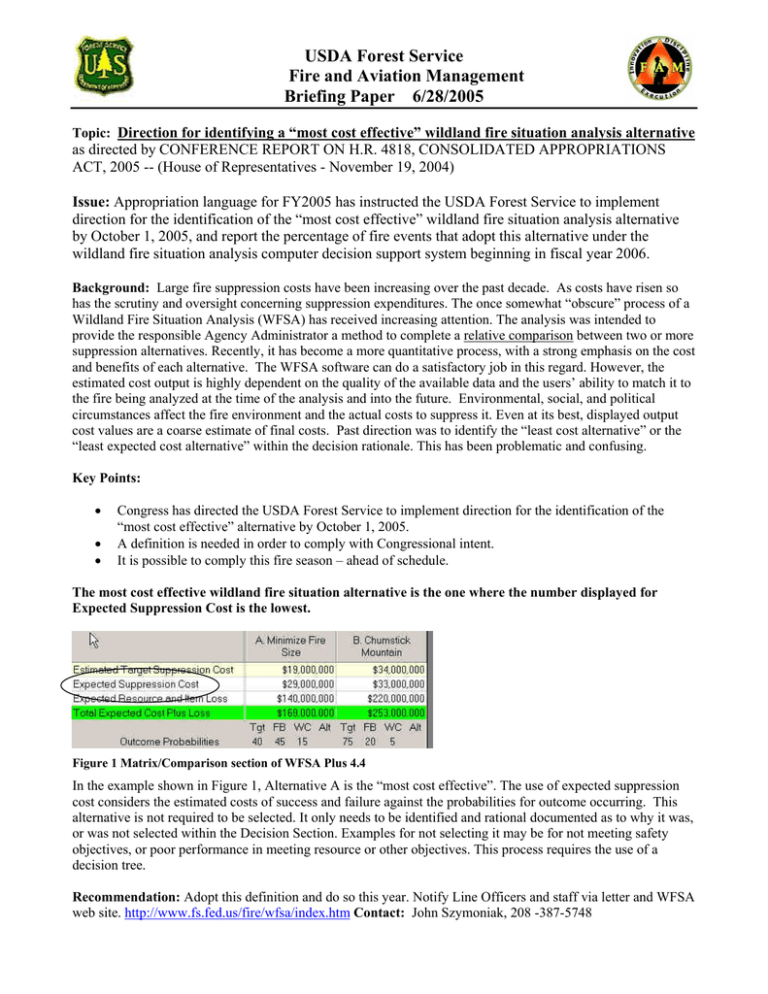
USDA Forest Service Fire and Aviation Management Briefing Paper 6/28/2005 Topic: Direction for identifying a “most cost effective” wildland fire situation analysis alternative as directed by CONFERENCE REPORT ON H.R. 4818, CONSOLIDATED APPROPRIATIONS ACT, 2005 -- (House of Representatives - November 19, 2004) Issue: Appropriation language for FY2005 has instructed the USDA Forest Service to implement direction for the identification of the “most cost effective” wildland fire situation analysis alternative by October 1, 2005, and report the percentage of fire events that adopt this alternative under the wildland fire situation analysis computer decision support system beginning in fiscal year 2006. Background: Large fire suppression costs have been increasing over the past decade. As costs have risen so has the scrutiny and oversight concerning suppression expenditures. The once somewhat “obscure” process of a Wildland Fire Situation Analysis (WFSA) has received increasing attention. The analysis was intended to provide the responsible Agency Administrator a method to complete a relative comparison between two or more suppression alternatives. Recently, it has become a more quantitative process, with a strong emphasis on the cost and benefits of each alternative. The WFSA software can do a satisfactory job in this regard. However, the estimated cost output is highly dependent on the quality of the available data and the users’ ability to match it to the fire being analyzed at the time of the analysis and into the future. Environmental, social, and political circumstances affect the fire environment and the actual costs to suppress it. Even at its best, displayed output cost values are a coarse estimate of final costs. Past direction was to identify the “least cost alternative” or the “least expected cost alternative” within the decision rationale. This has been problematic and confusing. Key Points: • • • Congress has directed the USDA Forest Service to implement direction for the identification of the “most cost effective” alternative by October 1, 2005. A definition is needed in order to comply with Congressional intent. It is possible to comply this fire season – ahead of schedule. The most cost effective wildland fire situation alternative is the one where the number displayed for Expected Suppression Cost is the lowest. Figure 1 Matrix/Comparison section of WFSA Plus 4.4 In the example shown in Figure 1, Alternative A is the “most cost effective”. The use of expected suppression cost considers the estimated costs of success and failure against the probabilities for outcome occurring. This alternative is not required to be selected. It only needs to be identified and rational documented as to why it was, or was not selected within the Decision Section. Examples for not selecting it may be for not meeting safety objectives, or poor performance in meeting resource or other objectives. This process requires the use of a decision tree. Recommendation: Adopt this definition and do so this year. Notify Line Officers and staff via letter and WFSA web site. http://www.fs.fed.us/fire/wfsa/index.htm Contact: John Szymoniak, 208 -387-5748
